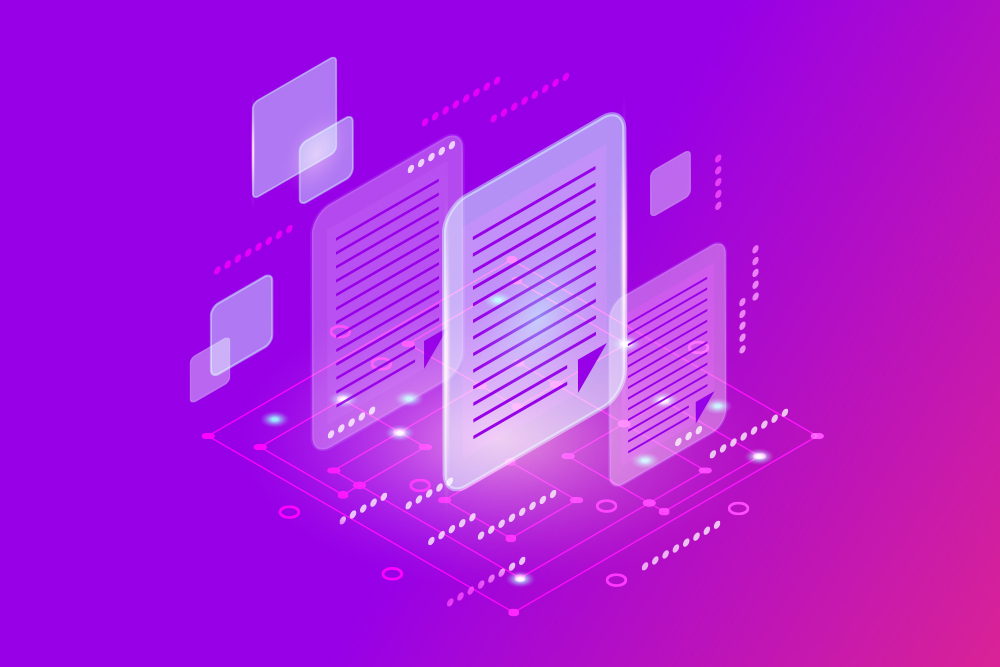Digital transformation buzzwords for the not-so-technical
Everyone’s talking about digital transformation, especially in procurement, and using a lot of terms that might not mean much to you. Machine learning (ML), deep learning, artificial intelligence (AI), robotic process automation (RPA), blockchain and more—these buzzwords are peppered across presentations and marketing materials. You don’t need to know Python to understand the basics of these new technologies, though.
Artificial Intelligence (AI)
You might picture a robot with emotions, but AI’s not actually that complex. AI is a computer or program making decisions that a human used to make, usually based on set rules. It starts with a hard-coded program that you set up with certain business rules and use to execute a process. For example, purchase orders under $500 for office supplies don’t need manual approval—that’s basic AI. AI becomes more advanced as you evolve into machine learning and deep learning (see diagram below).

Machine Learning (ML)
Machine learning is basically a program with a feedback loop. The development team uses a bunch of examples to create an algorithm, ideally with a lot of clean data, and then puts the code to work. Machine learning means that there is a built-in way to continue to feed data into the model and continue to improve it. That could be as simple as user feedback i.e. “Was this recommendation helpful?” or very complex i.e. “We predicted that this transaction was at high risk for fraud. What percent of fraud transactions were identified this way?”.
Machine learning is a subset of AI.
Deep Learning (DL)
Deep learning is the next evolution of ML. With ML, you need to have structured data that is well-categorized, with clear success/fail criteria—and you usually need a person to tag data before you “teach” the model what to do with it. Deep learning uses the technology of a neural net to evaluate unstructured or “messy” data, rather than relying on a human to tag attributes.

Robotic Process Automation (RPA)
Robotic process automation focuses more on automating human activities like clicks or motion than on decisions and learning. RPA focuses on “doing” the thing versus “thinking or deciding” for you. Think of RPA as an advanced macro—“Go to this folder, execute this action, save the file to this drive at 6pm.” RPA software can automate repetitive actions by eliminating or reducing clicks. It’s a ‘bot’ that does stuff but doesn’t really make decisions.
Now, next-generation RPA is being integrated with AI, ML and even DL to combine the “doing” with the “deciding”—and it’s becoming much more useful! You might find this combination of activity labeled as “Intelligent Automation.”
Blockchain
The buzzword to rule all buzzwords, blockchain is tossed around as a technology that will change everything, but nobody can really explain it. Honestly, it’s not that complicated. The idea is that, rather than trying to keep track of the history of a transaction, the transaction itself gets “stamped” with each piece of the process as it goes along. Each “block” of the chain adds an encrypted piece of data to the transaction, so you can always understand the history and the process that a transaction went through. Because each system keeps a record of that “tag,” it’s really hard to hack.

Internet of Things (IoT)
IoT is a very cool-sounding name that explains a concept we all know and understand but maybe didn’t have a name for. Basically, it’s a network of devices that communicate with each other, relaying information from sensors or other pieces of data input. So, for example, an oil tank that uses the internet to alert a central system when it’s low on fuel, or a traffic camera that captures your license plate if you blow the red light.
Home automation and “smart devices” are a part of the IoT—a doorbell that alerts your phone when someone rings, or a thermostat that kicks on when people come home. Combining IoT with the other technologies makes these devices even smarter; think of trains that schedule their own maintenance or die-cutters that order their own replacement blades.






